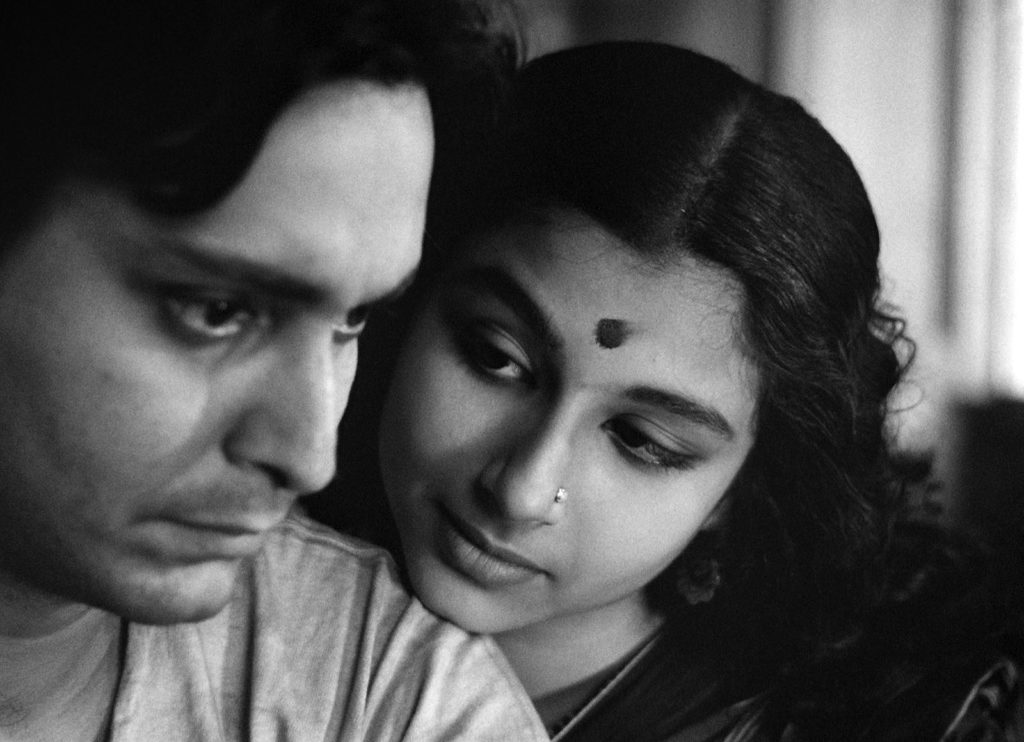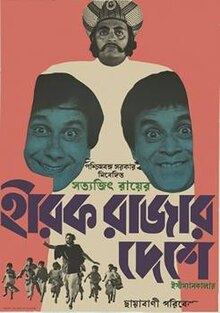Shakespeare once said, “What’s in a name?” but with Satyajit Ray, this phrase will never be pertinent enough. Because we all know, his sheer name depicts the entire film institution for cine lovers. Be it any branch of filmmaking, he had dig deeper into it and had left indelible mark on his admirers worldwide. This year marks his birth centenary on 2nd May, 2021. In this article, I pay my humble tribute to this legendary auteur. The best 9 films that had moved me, if you have any other suggestions, please share your views with us.

1. Pather Panchali (1955)

The first flush of ‘Apu Trilogy’, Aesthetically depicting the lives of a village, Nischindipur.Based on the story by Bibhutibhushan Bandhapadhay, audience gets introduced to Apu, Durga and their family. Portraying poverty in such creative’s, it questions us on the real necessities. Ray finely knitted the pain of poverty, in poetry written in verses in the ‘Song of the little Road’. Creatively this poetry is all about necessities and life.

2. Aparajito (1956)
The sequel to Pather Panchali, Aparajito starts with the Ray family being settled in Kashi (Varanasi).The second chapter primarily focuses on different stages of Apu’s life. Losing his father at the age of ten, his mother single handedly brought him up facing difficulties.Apu being passionate about studies joins local school. He excels there and goes to Calcutta for higher studies and also gets a job. At the age of seventeen, he also loses his mother…Now the question arises, how will he survive alone in this great city?
3. Apur Sangsar (1959)

The last of the trilogy, we see that Apu settles in Calcutta. He meets his college friend – ‘Pulu’ and coincidentally gets involve in a wed-lock with Aparna. After that, the duo starts a happy married life. Suddenly, Aparna dies while delivering their child that left Apu devastated. Living a life of tragedy, he goes to Nagpur, living a vagabond life. The Trilogy ends beautifully when Apu meets his son ‘Kajol’ whose existence he had denied. But at the end, they together sail for their unknown new journey.

4. Mahanagar (1963)

In the 60’s when people were striving to get daily bread, private banks, firms were closing their doors. In conservative families, it was not a regular practice for a housewife to earn for a living. Ray has skillfully portrayed, ‘Arati’ a simple girl’s journey in becoming a saleswoman of a corporate sector. Her husband worked in a private bank that also closed down as it failed. Arati also left her job for ethical reason. Can they survive in this city, together? Mahanagar is a critical focus on togetherness, inner tribulations and questioning purists.
5. Jalsaghar (1958)
Here we see the time when Zamindari system was abolished in Bengal. Biswambhar (Zamindar) has spent unnecessarily on lavishness when he had much. He spends a lot on music, and other royal enjoyments to keep his status. Lastly it ends when he spends the last of the royal money, gradually ending his life
6. Aranyer Din Ratri (1970)

Four friends – Ashim, Sanjoy, Hari, Shekhar goes on an adventure from their boring city life to the wilderness of greenery. Ray also plotted characters like Aparna, Duli. A game of self-discovery is very much found in the movie, where the audience rediscovers them through the characters.
7. Kapurush (1965)

This is a story of Amitabha, Karuna and Bimal.Coincidentally for a night Amitabha had to take shelter in the girl’s home, whom he loved and turned down. Now she is married. However, knitting the darkness of lost love; Ray finely ends the movie with both being lost, yet again.
8. Sonar Kella (1974)

It is about a boy who remembers events from his previous life. He sets out for a journey and gets kidnapped. Then Feluda along with Topshe set out for an adventure to Rajasthan, finding the boy – Mukul. In train they meet Lalmohan Ganguly aka Jatayu, the third musketeer.
Then confronting many challenges Feluda finally finds Mukul and they return to Calcutta.
9. Hirak Rajar Deshe (1980)

In my view, the most relevant movie in the present situation is Hirak Rajar Deshe, where we see a king practicing evil practices on his people. Ray creatively knotted Gupi-Bagha’s character in the movie. We also see education is banned and king trying to brainwash minds of common mass through his mogojdholai tactics. However, in the end we get to see the end of fascism and victory of the laymen. Who would forget the line? “Dori dhore maaro taan, Raja hobe khan khan.”
Author:
Ankur Dutta



Post a Comment